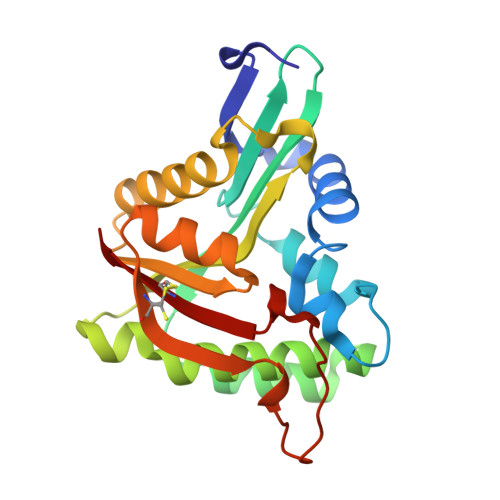Identification of aaNAT5b as a spermine N-acetyltransferase in the mosquito, Aedes aegypti.
Guan, H., Wang, M., Liao, C., Liang, J., Mehere, P., Tian, M., Liu, H., Robinson, H., Li, J., Han, Q.(2018) PLoS One 13: e0194499-e0194499
- PubMed: 29554129
- DOI: https://doi.org/10.1371/journal.pone.0194499
- Primary Citation of Related Structures:
5YAG - PubMed Abstract:
Mosquitoes transmit a number of diseases in animals and humans, including Dengue, Chikungunya and Zika viruses that affect millions of people each year. Controlling the disease-transmitting mosquitoes has proven to be a successful strategy to reduce the viruses transmission. Polyamines are required for the life cycle of the RNA viruses, Chikungunya virus and Zika virus, and a depletion of spermidine and spermine in the host via induction of spermine N-acetyltransferase restricts their replication. Spermine N-acetyltransferase is a key catabolic enzyme in the polyamine pathway, however there is no information of the enzyme identification in any insects. Aliphatic polyamines play a fundamental role in tissue growth and development in organisms. They are acetylated by spermidine/spermine N1-acetyltransferase (SAT). In this study we provided a molecular and biochemical identification of SAT from Aedes aegypti mosquitoes. Screening of purified recombinant proteins against polyamines established that aaNAT5b, named previously based on sequence similarity with identified aaNAT1 in insects, is active to spermine and spermidine. A crystal structure was determined and used in molecular docking in this study. Key residues were identified to be involved in spermine binding using molecular docking and simulation. In addition, SAT transcript was down regulated by blood feeding using a real time PCR test. Based on its substrate profile and transcriptional levels after blood feeding, together with previous reports for polyamines required in arboviruses replication, SAT might be potentially used as a target to control arboviruses with human interference.
- Key Laboratory of Tropical Biological Resources of Ministry of Education, Hainan University, Haikou, Hainan, China.
Organizational Affiliation:

















